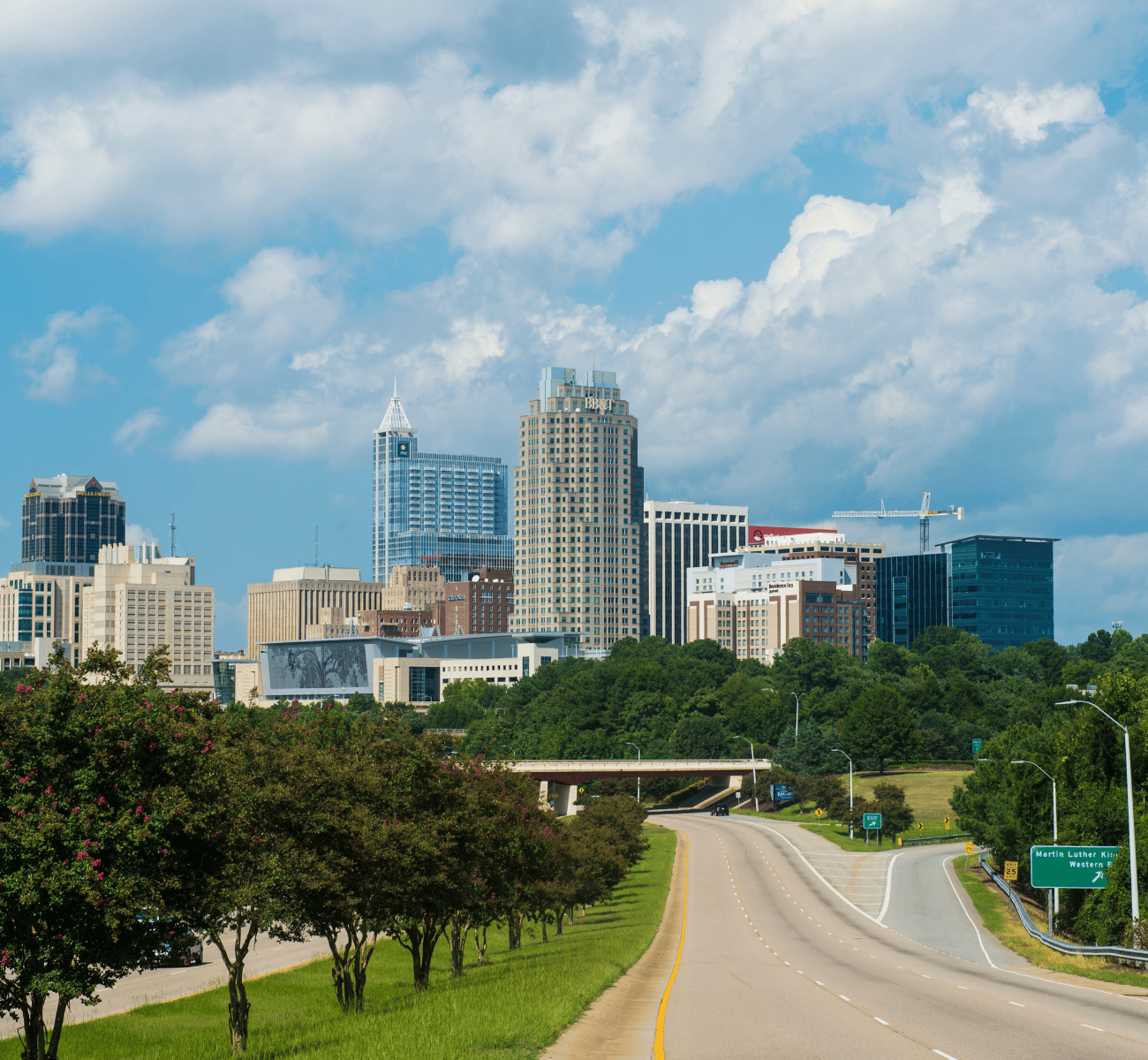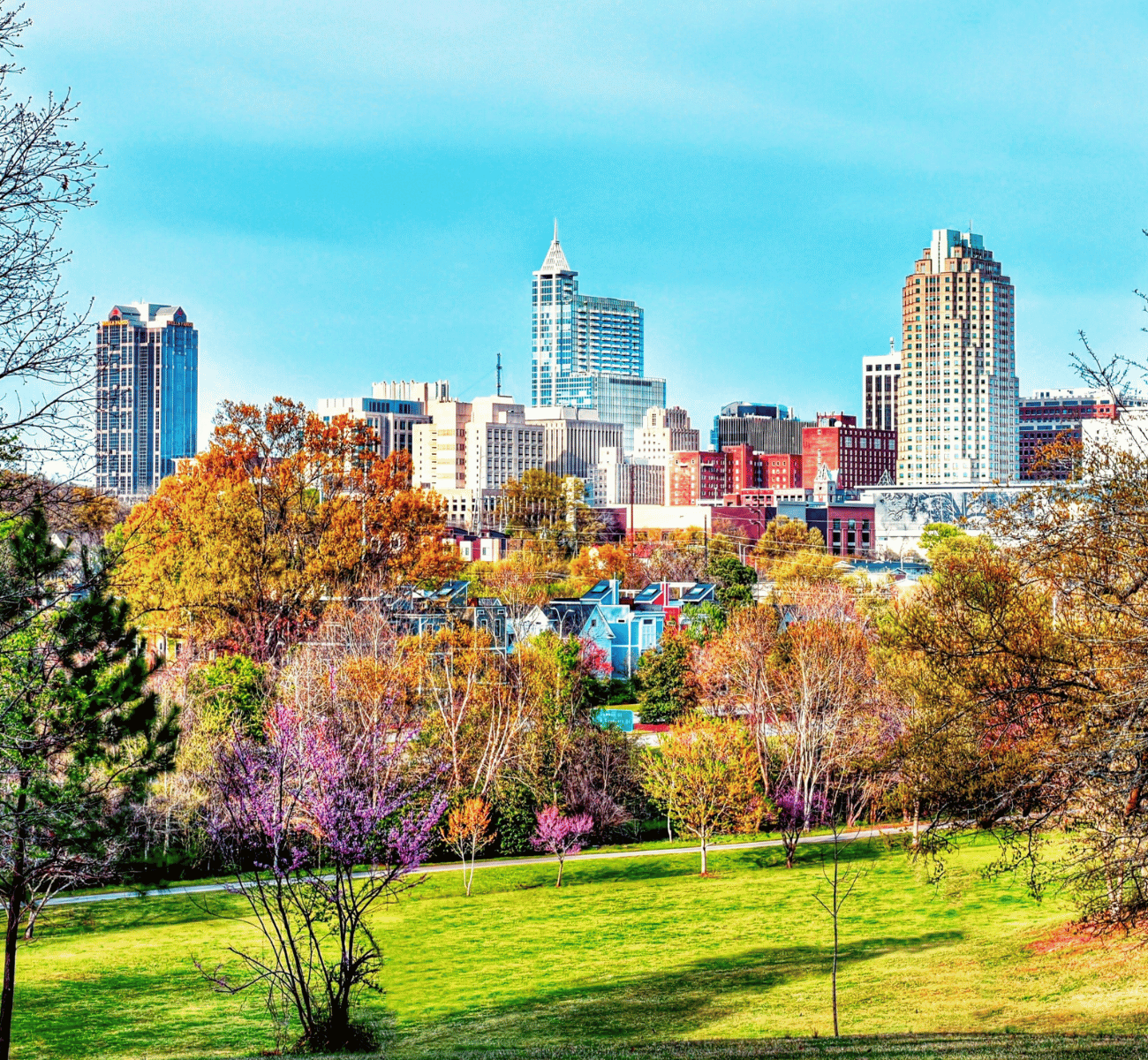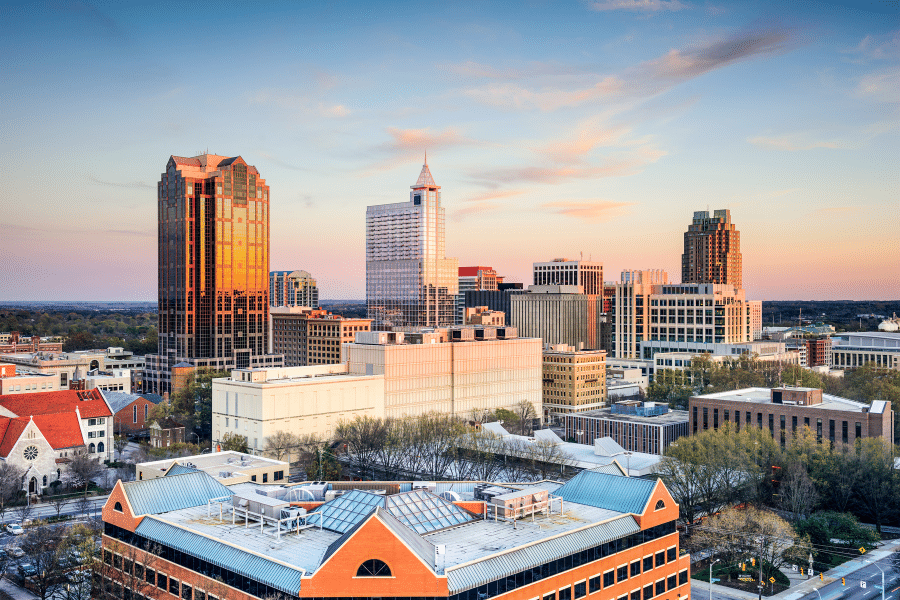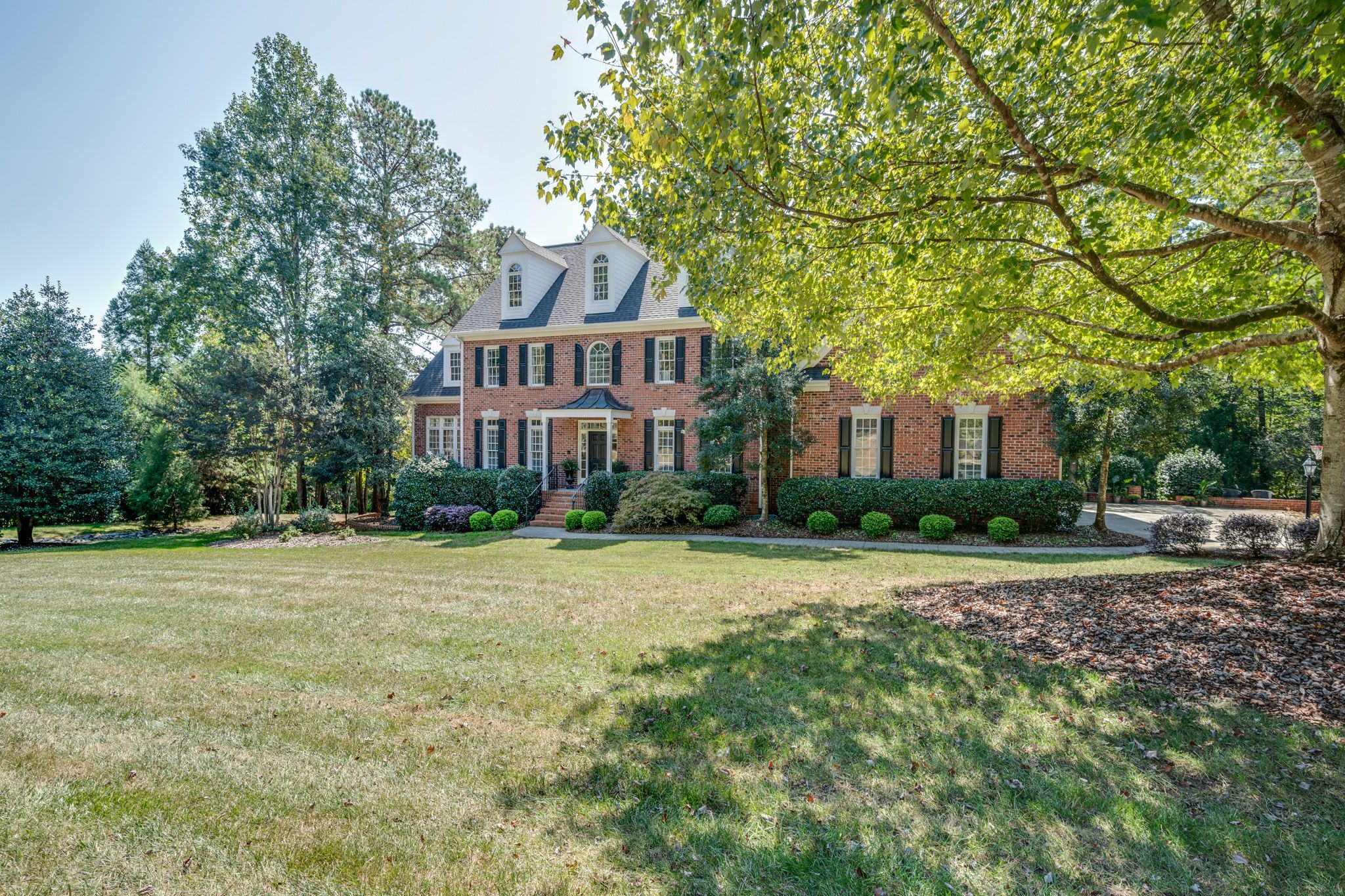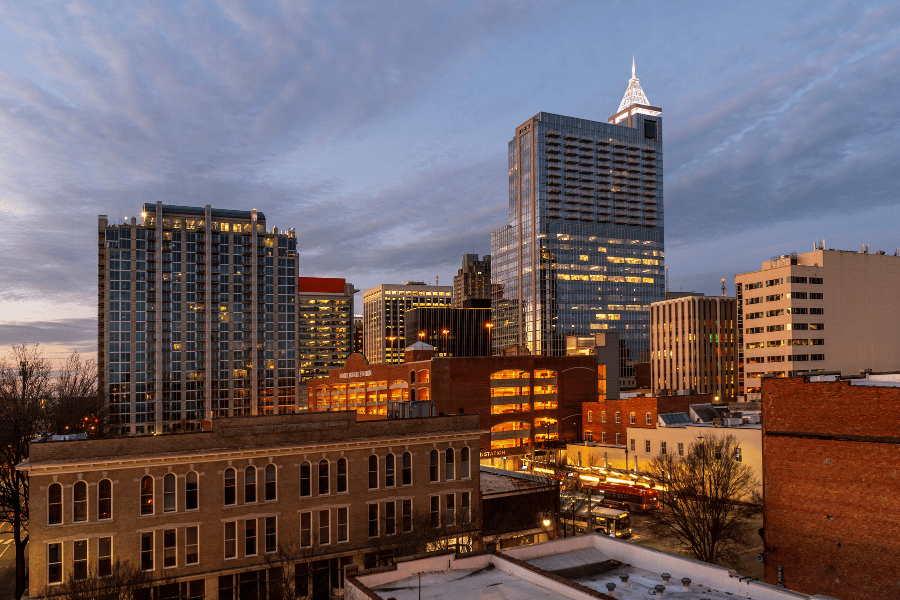History of Raleigh, NC: Raleigh's Local History
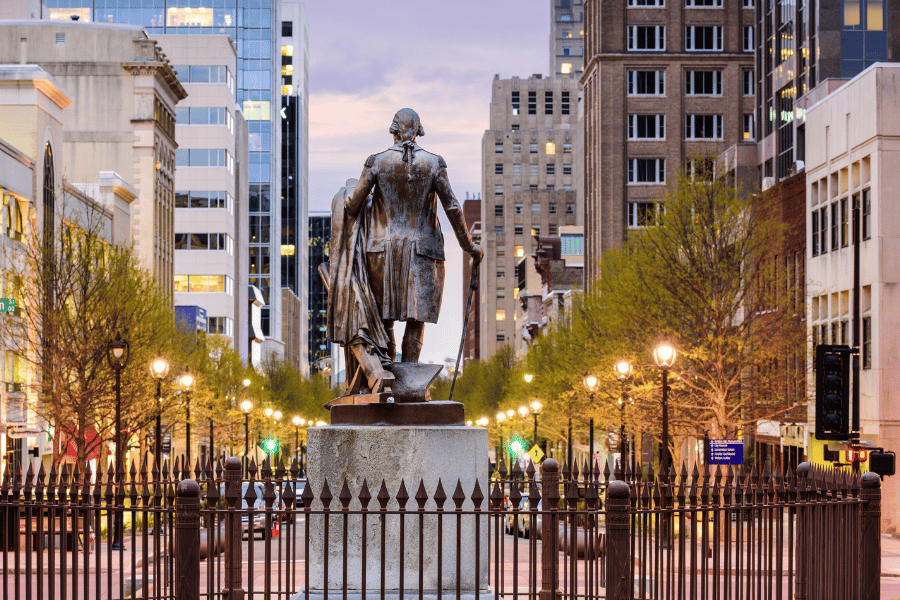
History of Raleigh, NC
Are you living in or considering moving to Raleigh and are intersted in the local history here? Keep reading to learn more about the history of North Carolina's capital.
Raleigh, NC, is the center of history, fun, and many more things. Since its establishment as the capital of North Carolina in 1792, the city has grown drastically and is now a hub for prime real estate and economic prosperity.
The deep-rooted history of this city goes back to when it was first established as the capital of the state. There are many landmarks, monument, buildings, and beautiful houses all throughout the city that all holds history.
Raleigh was said to be a "city of streets without houses," which, as we know now, is not true. Raleigh is a large city that is still home to many historical sites as well as many beautiful homes for sale throughout. So, if you are searching to move to Raleigh or anyone near the Triangle, check out the available real estate so you can live in the heart of it all.
Here is all you need to know about Raleigh's history.
Chapters
1. Raleigh's History
Raleigh was named for Roanoke voyages that were sponsored by Sir Walter Raleigh and were created by an act of the legislature in 1792. Joel Lane sold the state 1,000 acres to build a town.
State senator William Christmas planned Raleigh, and the original plan consisted of 400 acres and five public squares, with the largest lot being Union Square and the statehouse being the center of everything.
Raleigh grew slowly and experienced many fatal fires until the arrival of the railroad in 1840, which helped some development, and the city limits started to expand, as well as new buildings. The Civil War brought Raleigh to the end of the economic boom.
By 1891, the new downtown was completed with a new governor's residence, as well as many colleges, such as Shaw University, Meredith College, and North Carolina State University. After the recent developments, a second expansion came along in 1907, which expanded the city even more.
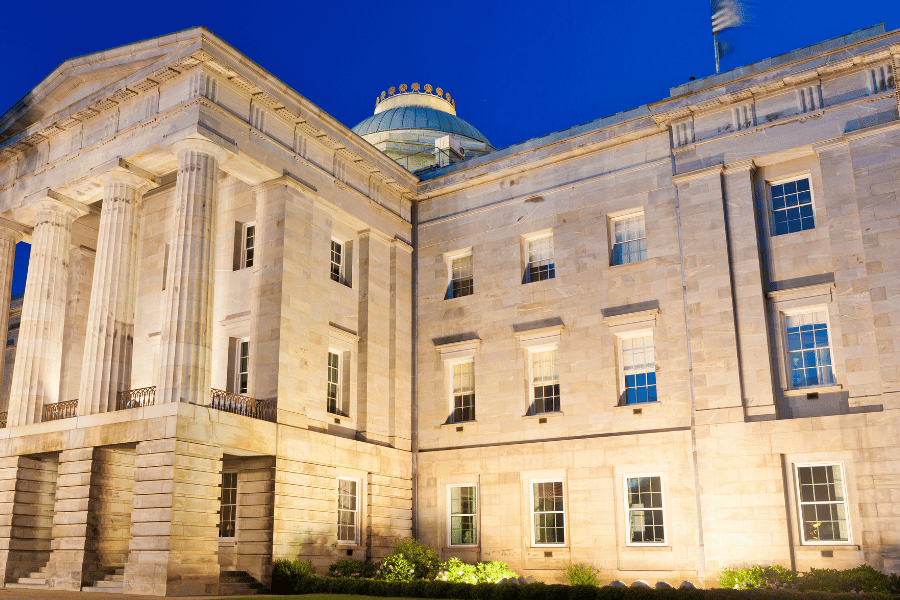
Many suburbs, trolley lines, and buildings came into the city, and in the second half of the twentieth century, the expansion of the state government and the development of the Research Triangle Park brought many people and businesses to the area. This new development had the largest impact on the city.
Since the 1970s, Raleigh has experienced drastic suburban development and continued to grow as a vibrant cultural center. Even today, the city and the smaller towns surrounding the capital continuously increase.
2. Raleigh Now
Raleigh has been ranked as the #1 best city for quality of life in the United States and the second-best city for quality of life worldwide. Raleigh has a population of 472,540 people and is currently growing at a rate of 0.36% annually, and the population has increased by 1.09%.
Even though this city is rapidly growing and is considerable today, one of the best parts about Raleigh is that it still has the small-town feel. Raleigh is where you will have a sense of community and comfort.
As one of the fastest-growing cities in the United States, Raleigh is a great place to relocate for many reasons. With abundant job opportunities, a strong economy, and many things to do, Raleigh is an excellent place to live.
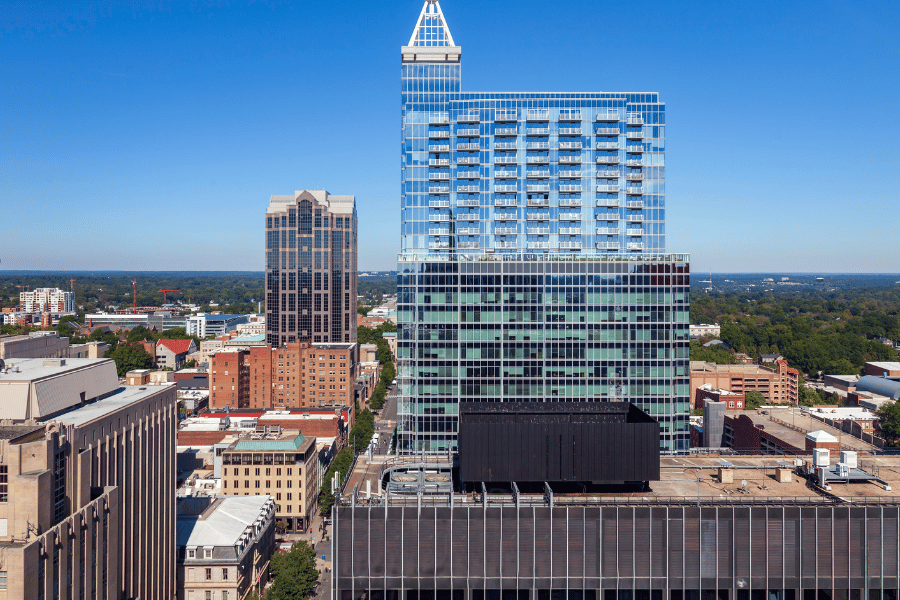
3. Union Square
The Union Square is where the State Capitol sits, which is surrounded by memorials and statues. Since 1792, the square has served as the designated site for the state legislature. The new capitol was built in 1840 in place of the original statehouse, which was destroyed in a fire in 1831.
For over two centuries, the government has erected memorials to commemorate people, events, and causes of importance here. The concrete walkways stretch around the statehouse, which makes it easily accessible to visit the monuments.
Around the square that is home to the statehouse in a beautiful greeny, you can find various memorials that are like bronze figures, young soldiers, warriors carrying wounded governors, and George Washington. This location is highly popular, especailly if you are searching for a place that holds much history.
4. Fayetteville Street
Fayetteville Street is considered a famous street in Raleigh. About half a mile long, this street is the center of history and culture in the downtown area of Raleigh. Since 1792, this street has always been essential to Raleigh's growth and economic prosperity.
As the "Main Street" for much of its history, this street has acted as a parade ground, hosting events like the march of Union troops toward the State Capitol in 1865. The north-south road connects the state Capitol to the Raleigh Convention Center and the Progress Energy Center for the Performing Arts.
Fayetteville Street was added to the National Register of Historic Places in 2008. Being a significant and well-known area of Raleigh, it is utilized for various important events due to its impact on the city's history.
5. Historical Districts
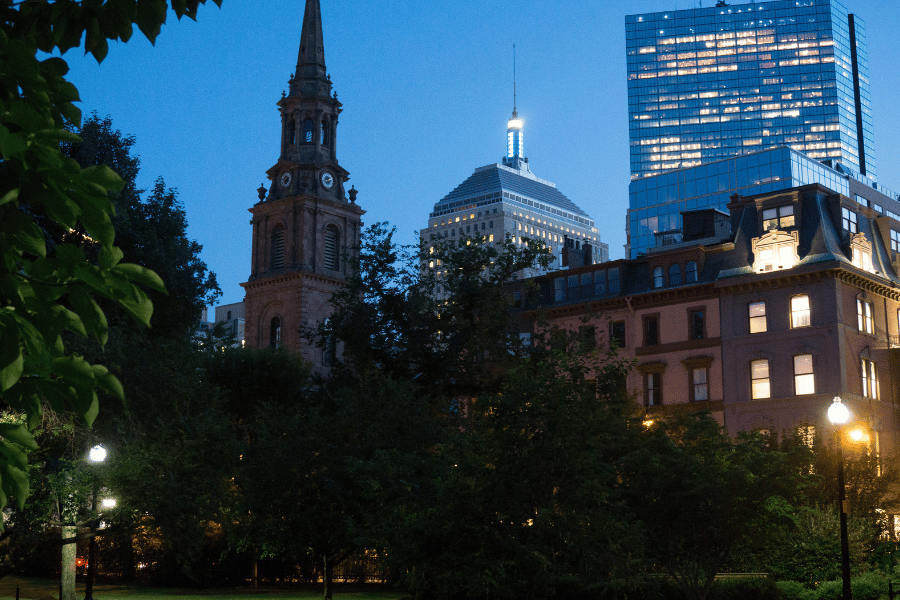
Raleigh has eight historic districts: Blount Street, Boylan Heights, Capitol Square, Moore Square, Oakwood, Prince Hall, Glenwood-Brooklyn, and Oberlin Village. Below is a bit of info about each of these districts.
| Blount Street | Blount St's reputation as Raleigh's finest neighborhood solidified in 1883 when the state built the Executive Mansion and many other residential buildings. |
| Boylan Heights | It is one of Raleigh's earliest planned suburbs with heavy, distinctive characters and Victorian-style homes. |
| Capitol Square | Home to the most prominent building, the State Capitol, the park square and street around it hold many unique historic characters. Other buildings with Classical Revival styles are also in this area. |
| Moore Square | Known for the many parks throughout the area, this is one of the places of the original plan of Raleigh and is close to many other historic neighborhoods. |
| Oakwood | Home to Raleigh's most extensive collection of nineteenth-century Victorian-era dwellings and its richest diversity of architectural styles. |
| Prince Hall | Raleigh's first African-American and Mixed Use District is home to some of the oldest residents. |
| Glenwood-Brooklyn | The neighborhood that marked the beginning of the suburbanization of the land in the city limited and is the early twentieth-century streetcar suburb for the working and middle class. |
| Oberlin Village | The longest surviving and most intact Reconstruction-Era freedman's colony in Wake County and the state. |
6. Historical Sites to Visit
Raleigh has many landmarks and monuments to have fun and learn simultaneously. Whether you are a history buff or looking for a fun way to spend a day in Raleigh, visiting some historical sites may be perfect.
Raleigh is full of history through monuments, homes, parks, and museums. Each of these sites is unique for its reasons. Below are some of Raleigh's most famous historical places that you should visit.
The Mordecai House
The Mordecai House is known for its deep history and as the oldest house in Raleigh. Built in 1785, this home housed six generations of families until 1964. The state made the home a public park and destination for history tours.
Still in its original location, the home symbolizes Raleigh's commitment to local history prevention. The Mordecai family was prominent in local and state affairs. The family sold land to help expand the city of Raleigh and donated many things to establish cemeteries.
Now, the Mordecai Square Historic Park is a place you can visit Tuesday through Sunday, where you may encounter a couple of ghosts and many fun facts about the history here.
Pullen Park
Pullen Park is North Carolina's first state park, the fifth oldest operating amusement park in the United States, and the 16th oldest in the world. Many people have traveled from all over the state for decades to visit this 66-acre park. One of the most notable attractions at the park is the Gustave A. Dentzel Carousel, built in 1911.
Visitors at the park may also ride the mini train from the Norfolk Southern Railway around the park to experience the whole area. There are many other fun opportunities and things to do throughout this park to get the entire experience.
The amusement park hours vary depending on the time of year, and there is a small ticket fee, so make sure you plan. If you are looking for a fun day out in the sun, visiting Pullen Park may be the best place for you and your family.
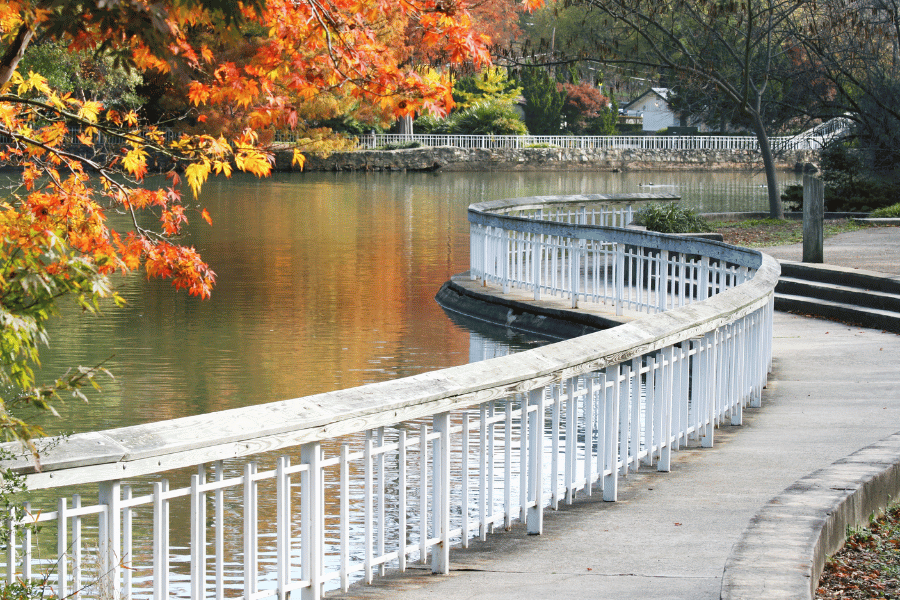
North Carolina Executive Mansion
The North Carolina Executive Mansion is one of the best historic sites in the capital and is the official residence of the Governor of North Carolina and their family. Built in 1883, this home is the family's primary residence and the "people's house," with thousands of people visiting annually.
The governor's building was moved several times, and the family was after the legislature bill was passed in 1882 to authorize the mansion's construction. The home's structure was finished in 1891 and is one of the best examples of the Queen Anne style of Victorian architecture.
Thirty different governors went to live in this mansion, including current Governor Roy Cooper. The villa is now placed on the National Register of Historic Places. If you are searching for a unique experience to get the whole experience of the history, visit this mansion.
You can reserve a tour of this mansion, but it has to be done at least two weeks in advance because hours and times are limited. The times to visit this mansion vary each season, so if you plan a tour, you can prepare.
7. Fun Facts
Raleigh is known for many things and is a unique place to live. Here are some fun facts to know about the capital of North Carolina.
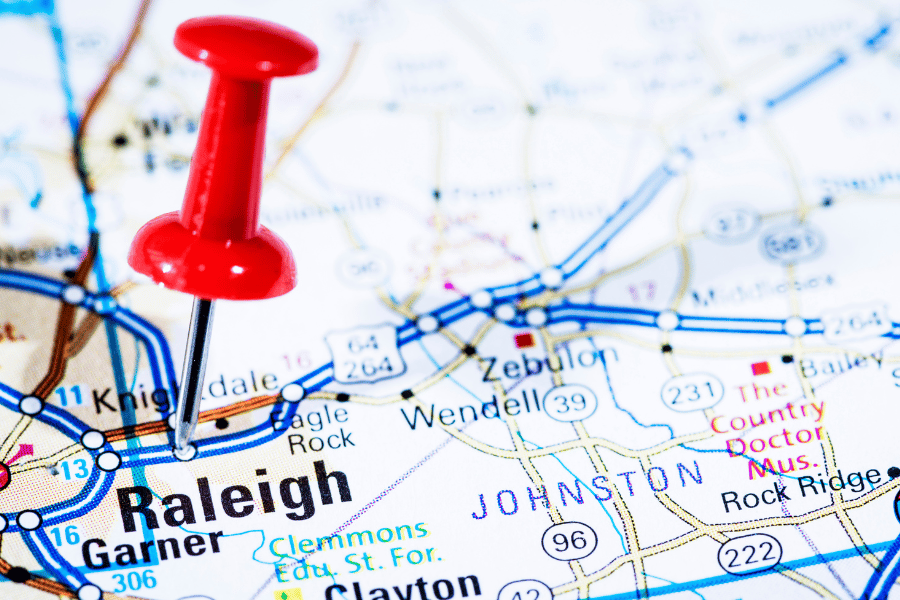
- Raleigh was named after Sir Walter Raleigh, a famous explorer
- Raleigh is the tenth-most famous city in the Southeast
- The city of Raleigh is known as the "City of Oaks" because of the abundance of Oak trees throughout the streets
- Pullen Park is the first public park in North Carolina and is located in Raleigh
- Raleigh is located in the center of the state
- Raleigh has a double-sided flag
- The capitol building was originally a tomb
- Home to the first historically black university in the South, Shaw University
- The city of Raleigh occupies a total area of 144 square miles
- The fifth largest cathedral in the United States
- Tallest building is 32 stories, the PNC Plaza
- Offers the world's largest selection of beers on tap, 350+ at the Raleigh Beer Garden
- The most live music venues in the state
- The state vegetable is the sweet potato
- The NC Symphony was the first state-supported symphony in the United States
FAQS
What is Raleigh known for?
Raleigh is known for many things like the "Smithsonian of the South, "City of Oaks," "The Triangle," and the "Like Music Capital of the South."
What city served as the capital city before Raleigh?
From 1789 to 1794, the state capital was Fayetteville, while Raleigh was built. Raleigh was then chosen as the site of the new capital in 1788, as its central location protected it from attacks from the coast.
Who founded the city of Raleigh?
Since Joel Lane is called the "Father of Raleigh," he holds the name of the city's founder in the 18th century.
History of Raleigh, NC - The Bottom Line
If you have a passion for history or are simply looking for a unique experience in Raleigh, visiting historic sites could be the perfect activity. If you're interested in the history of your home, this guide should provide you with the information you need to know about Raleigh.
Raleigh is a city that boasts a rich history and offers a variety of fun activities. It became the capital of North Carolina in 1792 and has since experienced significant growth, becoming a hub for prime real estate and economic prosperity.
The city's deep-rooted history dates back to its establishment as the state capital. Throughout Raleigh, numerous landmarks, monuments, buildings, and beautiful houses hold historical significance.
If you want to move to Raleigh or need help selling, contact us or visit our website. Our team at Raleigh Realty is here to help you with any home buying or selling needs.

Ryan Fitzgerald
Hi there! Nice to 'meet' you and thanks for visiting our Raleigh Real Estate Blog! My name is Ryan Fitzgerald, and I'm a REALTOR® in Raleigh-Durham, NC, the owner of Raleigh Realty. I work alongside some of the best Realtors in Raleigh. You can find more of my real estate content on Forbes, Wall Street Journal, U.S. News and more. Realtor Magazine named me a top 30 under 30 Realtor in the country (it was a long time ago haha). Any way, that's enough about me. I'd love to learn more about you if you'd like to connect with me on Facebook and Instagram or connect with our team at Raleigh Realty. Looking forward to connecting!
Related Blogs
